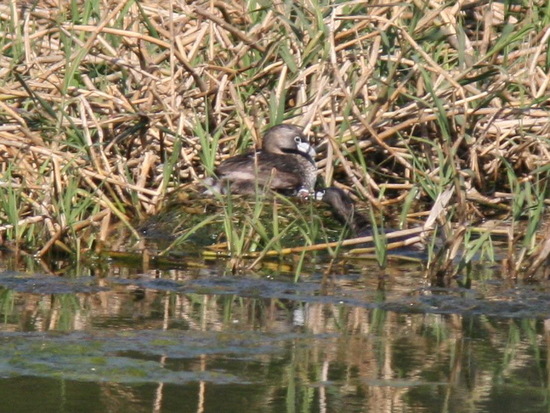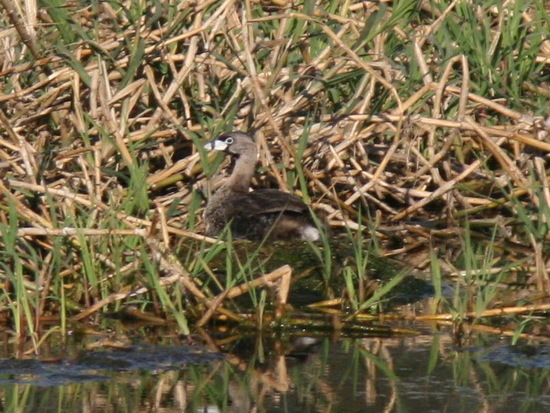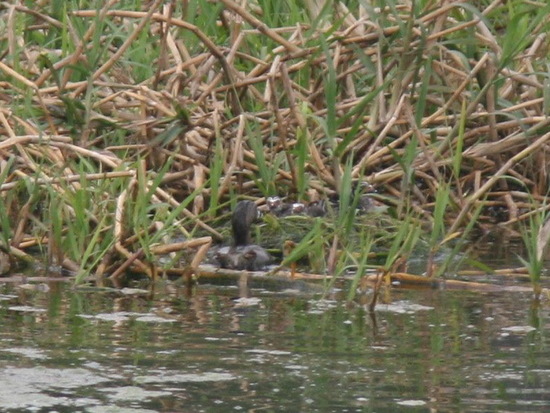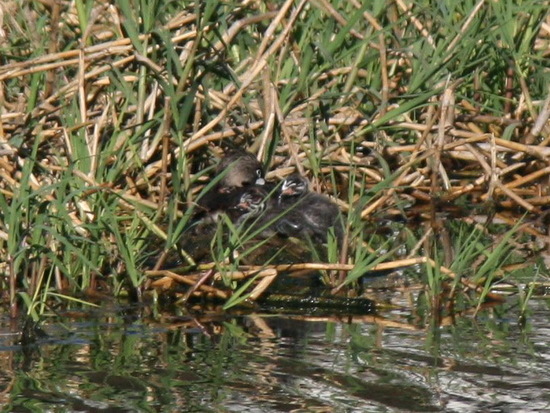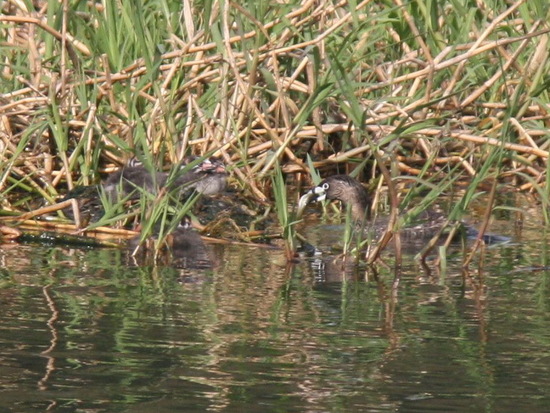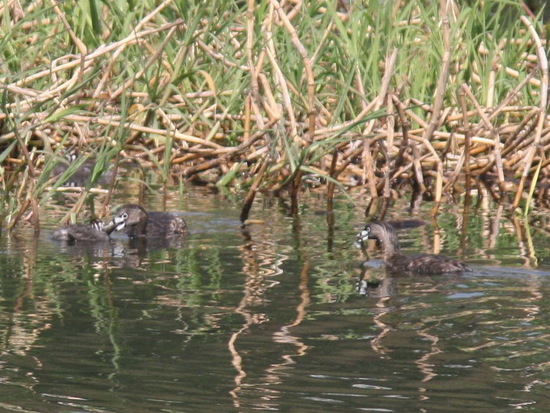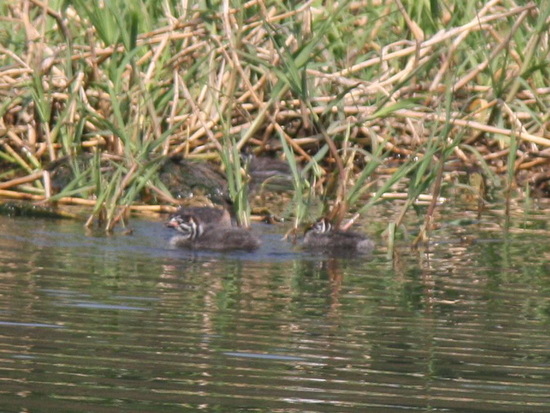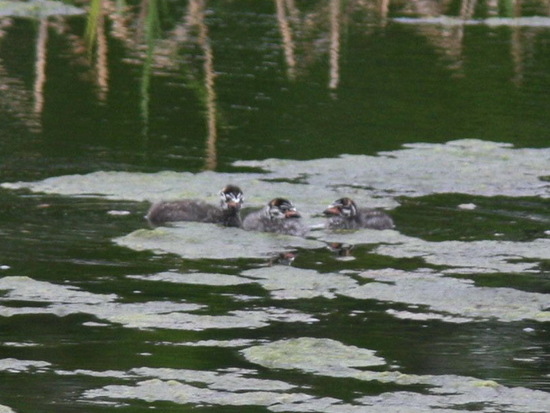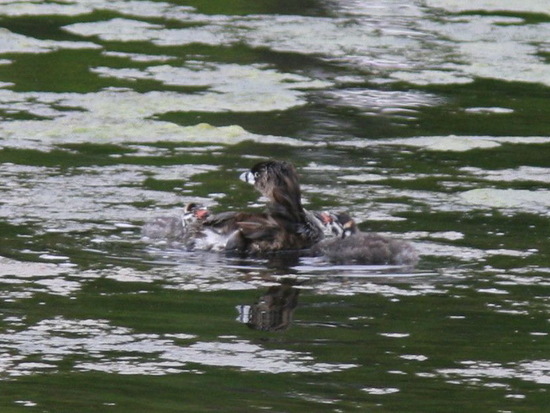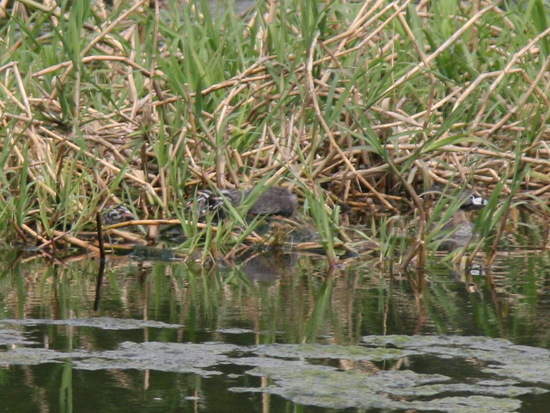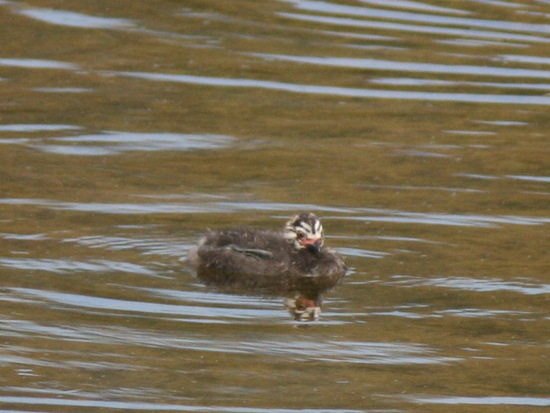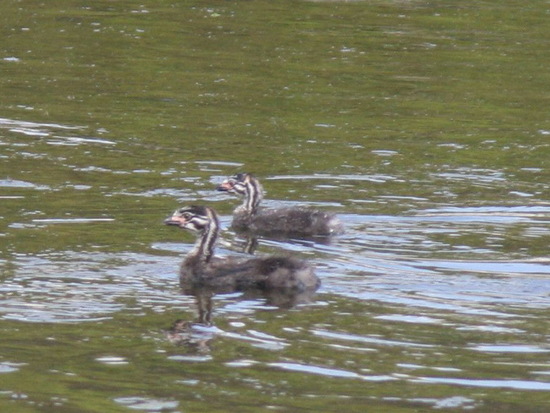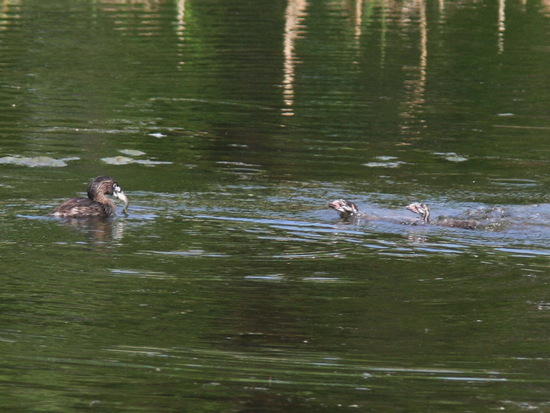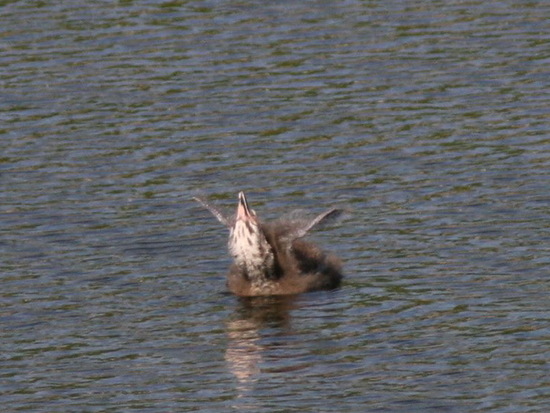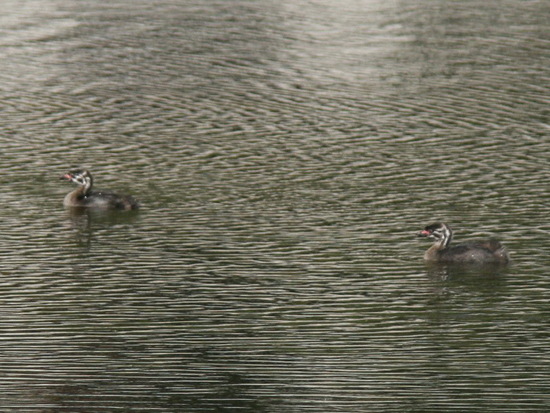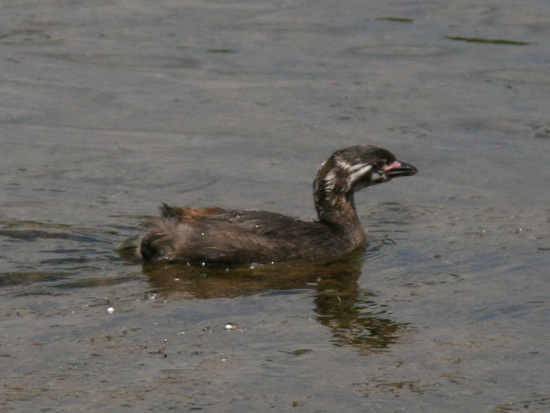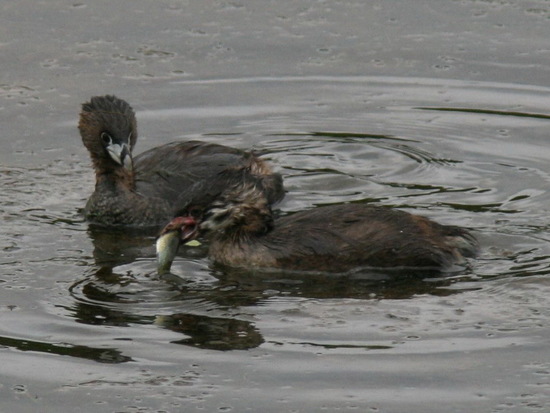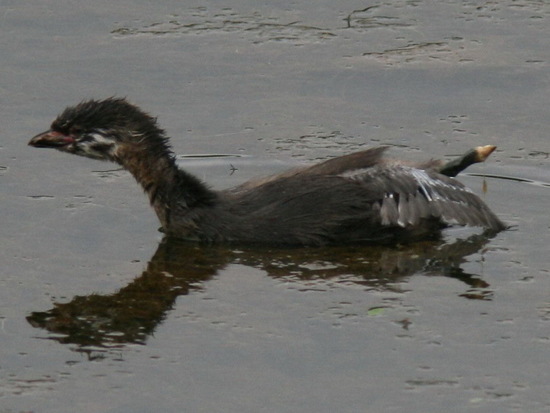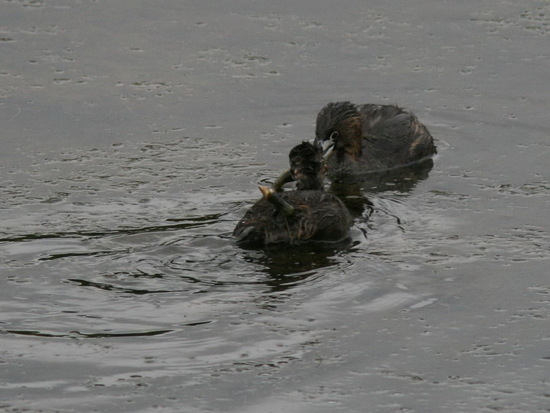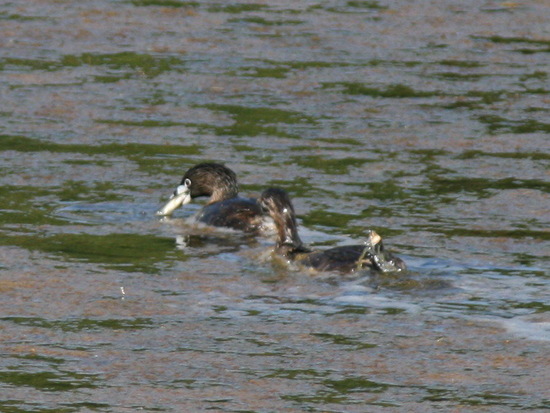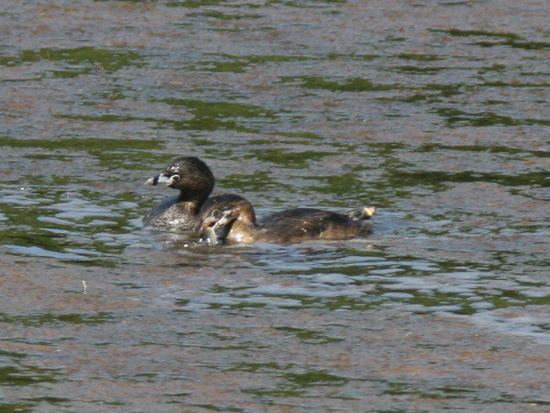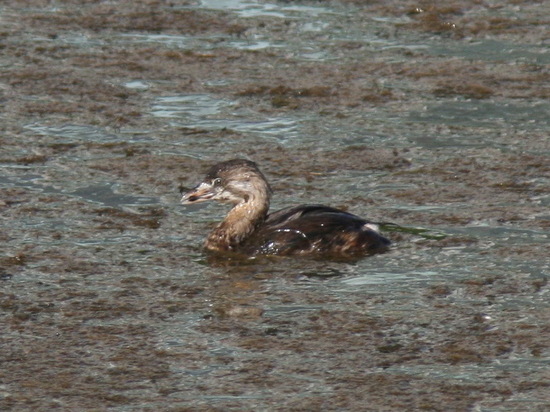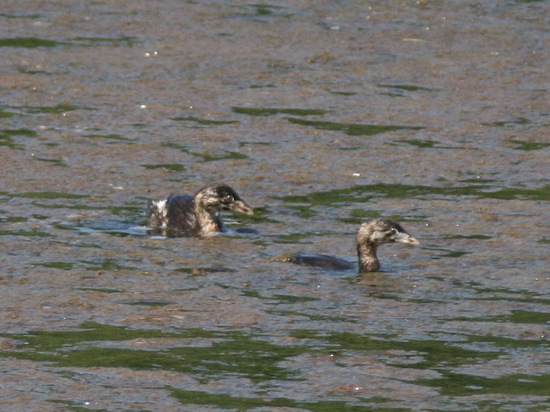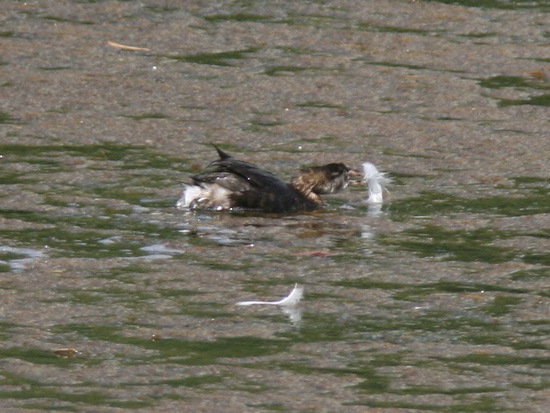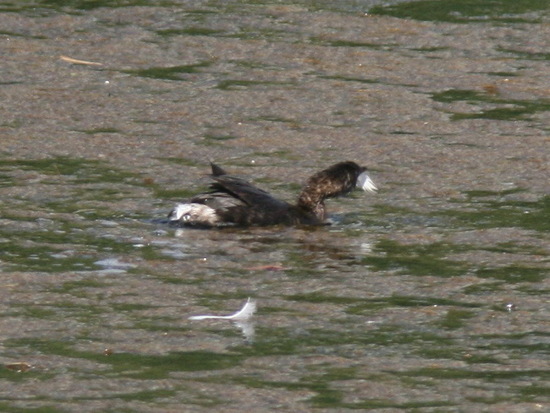Pied-billed grebe - Parental care
This nest was discovered thanks to the striking heads of the chicks. Rather far on the coast of an islet both the nest and the birds had passed unnoticed. In the first photo the small head of the chick barely appears from below the parent in the nest. The other parent seems to be touching it with the bill. When eggs hatch, the chicks are so mature that they can leave the nest in a few days. In the first two photos the adult still covers them to keep them hot. They stay in the nest, where food is delivered. Chicks have white streaks on the head and neck and their bill is pink.
Little by little they gain confidence and move away and venture into water far from the nest, though they return to it. They are fed by parents that provide live fish, which the chicks swallow whole. They do not dive.
Almost a month later the streaking marks have remained only on the face and the bill is losing its pink colouration. They are as big as their parents. They dive, which does not facilitate the follow up. Tehy feed by themselves. Apart from being the best documented, this case study was very peculiar. Only two out of five chicks survived. One of them appeared with a cut leg. This condition prevented it from diving adequately and spent a long time floating on the surface. This handicapped juvenile was fed by an adult whereas the "normal" juvenile lead a life on his own. This behaviour lasted till they were no longer seen in the pond.
In the last register the two juveniles look almost like adults. The early plumage is barely distinguished as well as the bill colouration. In the last two shots a typical habit of grebes: eating feathers. They might be their own or others'. In this case they were on the surface. It is not known for certain why they do it but the benefits it brings to them may well explain it. Feathers act as a siever so that fish bones do not pass on to the intestine and be digested in the stomach. The gizzard is not apt for grinding these bones. Besides, the feathers that end up in the stomach mix with other non-digested rests and are expelled as pellets.


